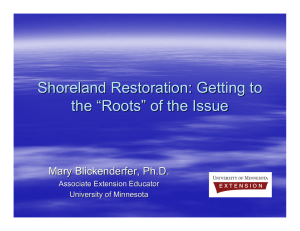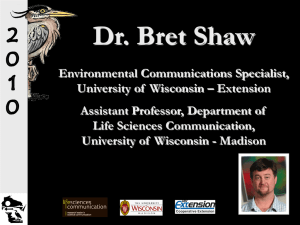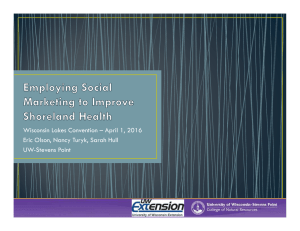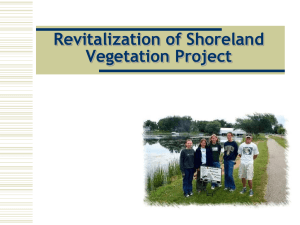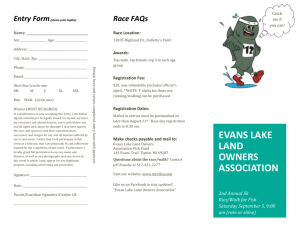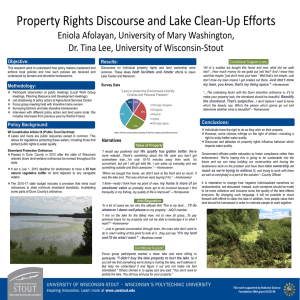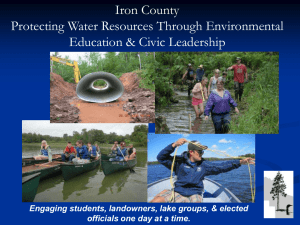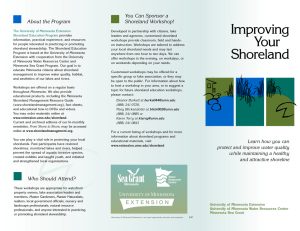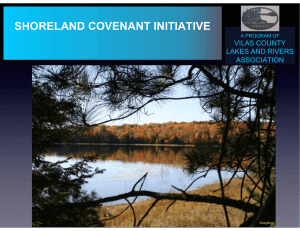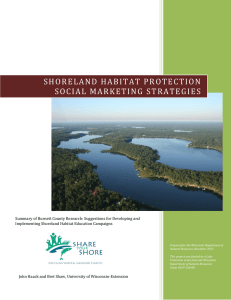Shoreland Restoration: Getting to the “Roots” of the Issue Mary Blickenderfer, Ph.D.
advertisement
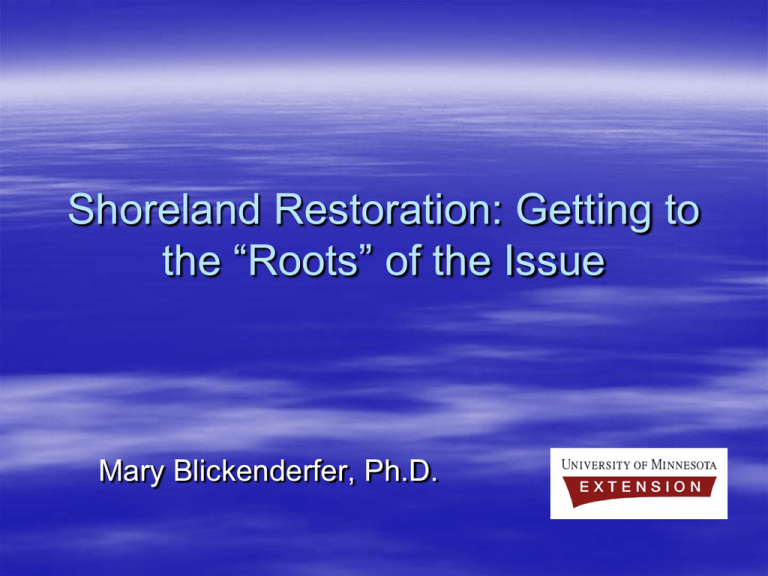
Shoreland Restoration: Getting to the “Roots” of the Issue Mary Blickenderfer, Ph.D. North Center Lake before Plant native flowers, grasses and sedges Plant native aquatics and install wave break 2 months after planting - cover crop established 2 years after planting – natives well established 6 years after planting – restoration failed. Contractor hired to “fix” problem. Wisdom, discoveries, new directions Site evaluation – what indicators do we use to predict soft armor/bioengineering success? (U of MN research 2009-2012) Loam soil 2 ft Ice Fetch 0.25 mi. Muskrats? Sandy soil 30 ft Fetch 1.25 mi Bounce Wisdom, discoveries, new directions Treat the shoreland “SYSTEM” – holistic approach to addressing shoreland restoration Toe protection Wave break Aquatic plants Wet fringe and upland plants Wisdom, discoveries, new directions Plant selection and sequencing – on erosive sites, plant rhizomatous species first; add showy, clump-formers later bulrush asters bur-reed Wet fringe and upland Emergent aquatics Fetch 0.25 mi sedges cordgrass arrowhead sedges Wisdom, discoveries, new directions Bioengineering – which bioengineering products and techniques will succeed? (U of MN research 2009-2012) Collect sediment? Coco log (toe protection) Wrapped brush bundle (wave break) Live fascine with rock, anyone? Vegetated geogrid Geotextile soil bags Vegetated rip rap Bowling ball rip rap? Wisdom, discoveries, new directions Every restoration is a research opportunity! Use multiple treatments on a site Gather pre- and post-data Make use of “citizen scientists” Wisdom, discoveries, new directions Social Marketing “Just how well do you know your audience?” Natural Shoreland Buffer Incentives Research (Research 2009-2011) – Knowledge, Attitudes and Practices (KAP) Property owner demographics* 67% of the property owners are seasonal About 90% enjoy a) relaxing, b) nonmotorized sports, c) fishing/hunting/trapping About 75% enjoy family events and motorized sports *results based upon 109 door-door and 103 mail-in survey responses of 319 total 10K property owners on 5 lakes in Itasca Co. Shoreland Knowledge 62 % or greater could identify common signs of a healthy lake (except 50% didn’t know about ice ridges) 57% or greater could identify what might cause a lake to become unhealthy Shoreland Attitudes Which of these three shorelines do they prefer? Why? Lawn Replanted 5% 20% Natural Other 5% 70% How many shoreland property owners enjoy lawn maintenance? 0-25% 26-50% 39% 51-75% 76-100% 82% of owners maintain their own lawn and 48% of those enjoy it Shoreland Practices On lakes with associations, how many property owners are members of the lake association? 0-25% 26-50% 51-75% 76-100% 88% 56% of members attend lake association meetings (usually the annual meeting) 90% of members read the newsletter Where do you go for lake information? (Indicate the top 2) Lake association 73% Neighbor 63% Internet Local contractor Realtor Itasca County Itasca Soil and Water Conservation District U of MN Extension Minnesota DNR 64% TV Radio They don’t seek information 64% Customized approach to buffers? Use lake association as the “link” Peer-peer recruiting (train shore owners) Individual attention – site visit Train-the-(buffer) trainers “Buy-in” activities for the tough sell owners “Keep the momentum” activities for the easy sell owners Journal/scrap book to record stewardship legacy The ends!
